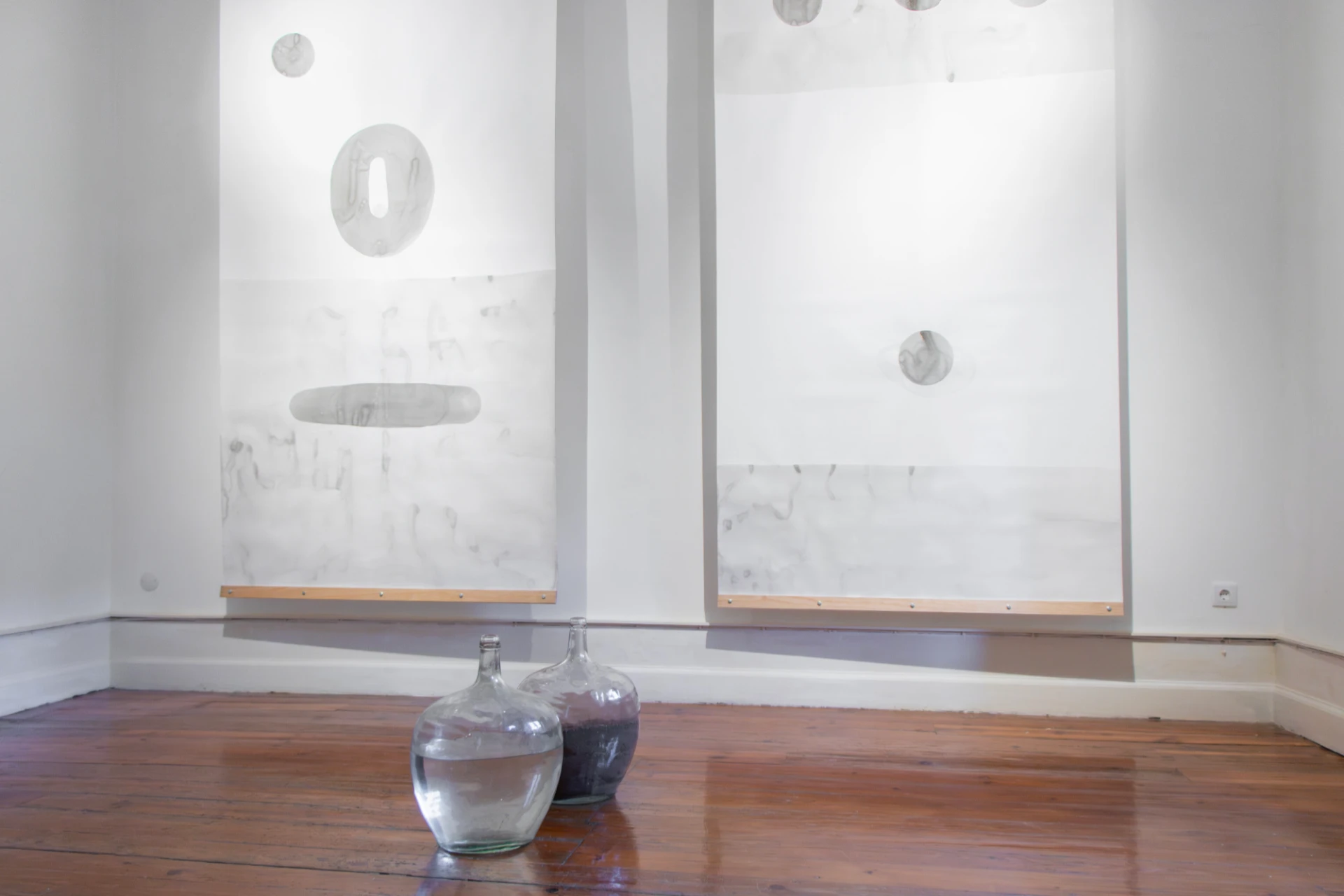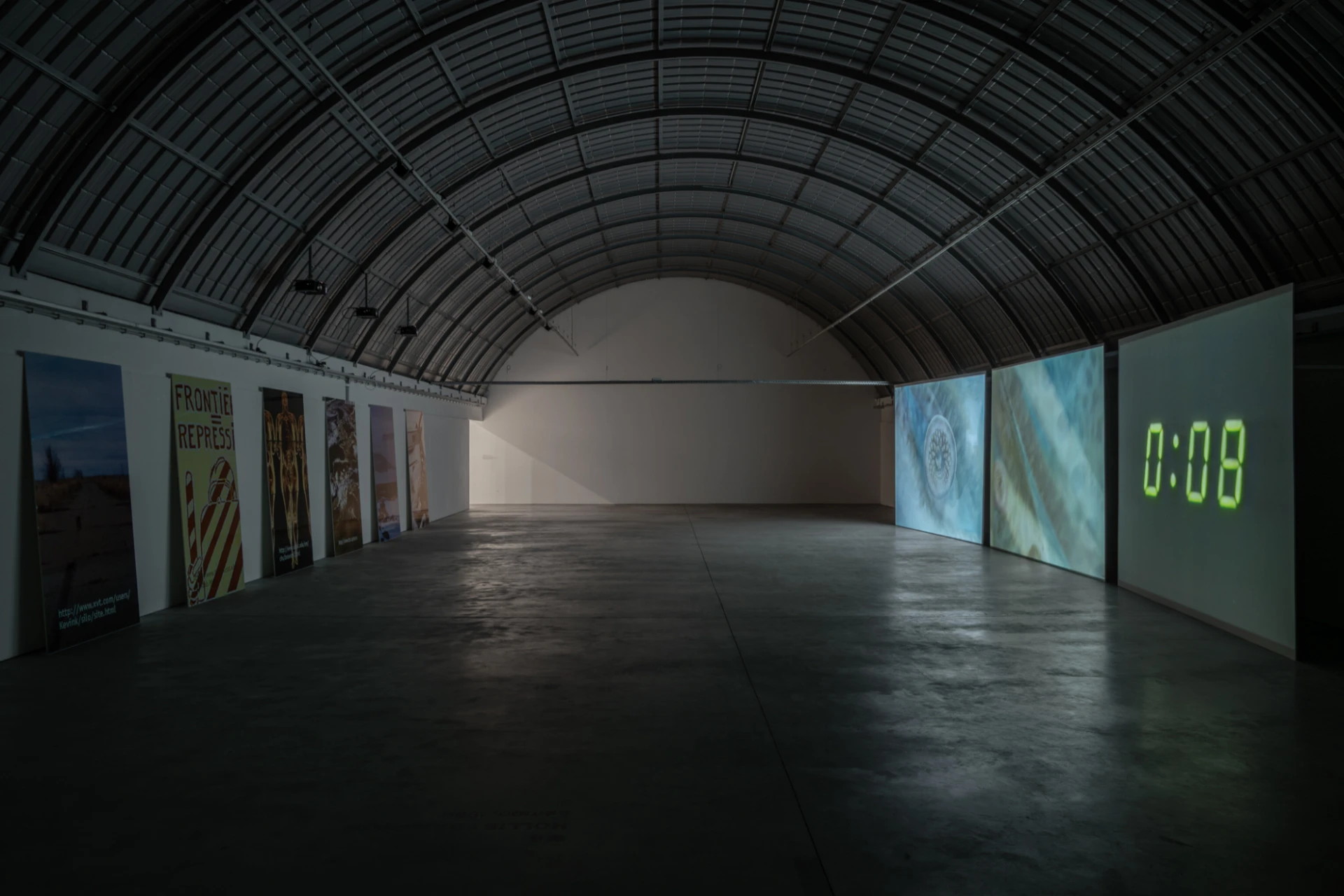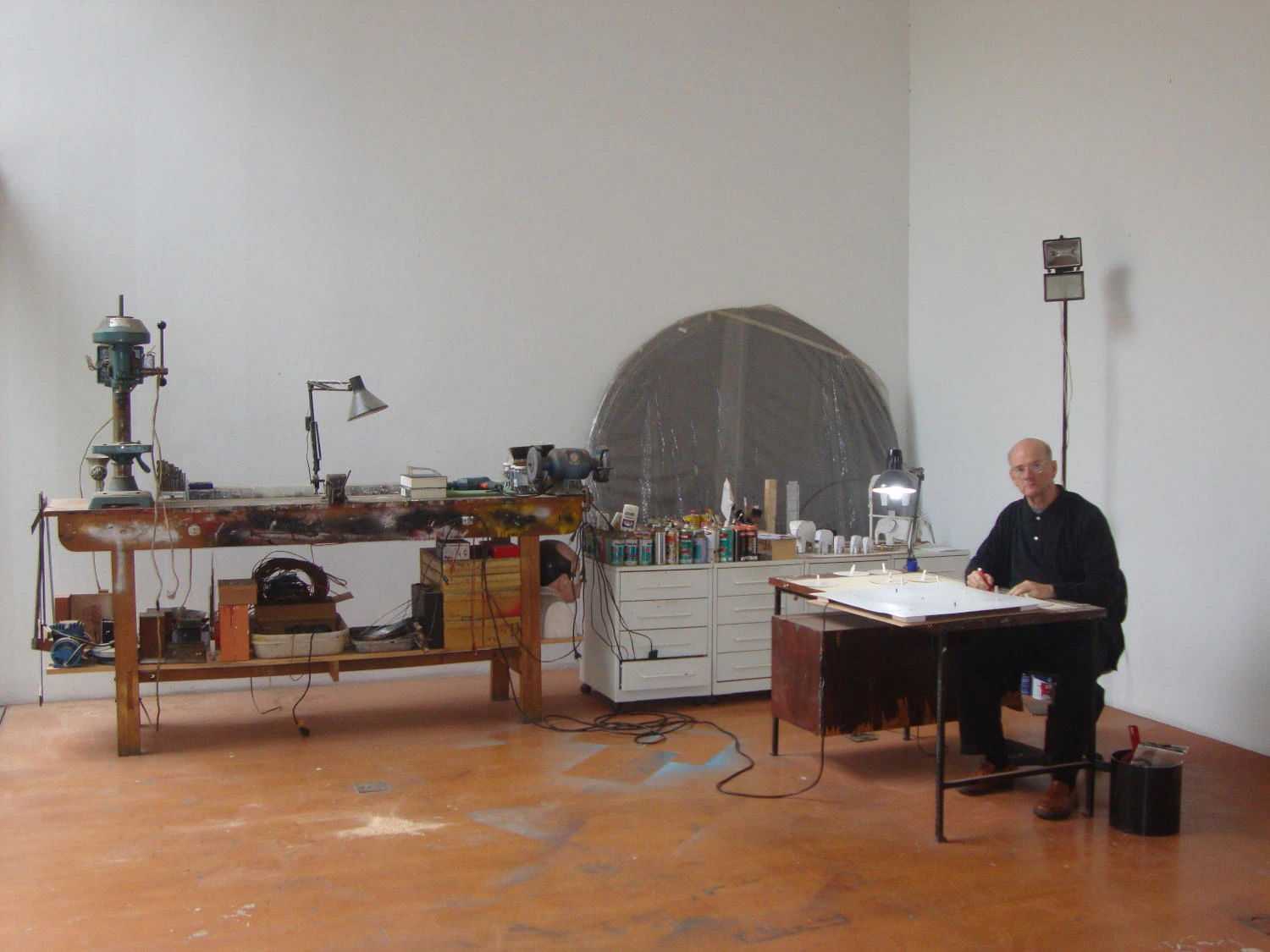article
A studio chat with: Guto Lacaz
In "A Studio Chat with", Diogo Bolota provides an in-depth look into the creative spaces of various Brazilian artists and explores their artistic practices.
My first encounter with Guto Lacaz's work was recent. Visiting his retrospective, which recently concluded at Itaú Cultural, right on Avenida Paulista, was like stepping onto a roller coaster at an amusement park. Some of the works on display were activated by the viewer, and the ride required movement, as if it were a machine. Many of his pieces evoked a dizzying sensation, like a trip to the top of a mountain, before the fall and the point of zero gravity.
While recognizing his universe of used objects, Guto seemingly takes away this grounding, causing surprise and strangeness by suppressing the primary function of these objects. A clear example of this is the piece that includes a can of Maria olive oil and an antenna that rotates around a tray—Maria olive oil looking for salad—flaunting its antenna in an almost alienating desperation.
The exhibition spans the building's two main floors: the upper floor features larger works; the lower floor features smaller objects, whose functions are reinvented by the artist. The exhibition sparked inspiring ideas, perhaps the best feeling you can have when leaving an exhibition.
It's true that his work has something in common with the kinetic artist movement, but Guto's greatest peculiarity is having written an artist statement: the big difference between his work and most authors who work with everyday objects is the fact that he lives as a human-object.
After visiting Itaú Cultural a month later, during the inauguration of the Sala do Cultura Artística (a historic building that underwent extensive renovation and reopened to the public with a musical program, sometimes led by resident artists), I met Guto Lacaz, whom I congratulated on the retrospective of his work. With these two encounters—the first at his exhibition, the second in person—it became crucial to visit his studio to better understand his work.
On the way to his home-studio in Jardim Paulista, we arrived at a space devoid of services, restaurants, or shops, mostly residential, with just the right amount of silence for Guto to work. After a short delay, Guto cracked a joke about the wait, sparking a good-natured conversation that's so characteristic of him and his work.
Guto speaks with wonder about his journey, like a child sharing his story. It was a great privilege to be there, with his generosity combined with his long experience as an artist. Guto graduated in 1974 as an architect, a discipline he pursued for the first four years after completing his studies. When asked about his relationship with Le Corbusier and the concept of the "living machine," Guto turned the conversation to his only project in Latin America, the Curutchet house in La Plata, Argentina. And while we admired the French architect's house, Guto mentioned Europe, having visited Portugal in 2011. He mentioned that he hadn't had much contact with contemporary art and that he was more interested in the past than the present.
In this zigzag, the conversation harked back to his childhood, a time when he took apart toys and cultivated a love for machines. Being very curious from a young age, collecting gifts from his parents' friends, Guto dismantled machines and all sorts of electromechanical objects, thus developing a deeply self-taught relationship with this universe.
Far from the possibility of one day becoming an artist, at one point, while still working in architecture (1978), he came across a poster for a competition called "Unusual Object" and entered. Having unexpectedly entered the exhibition-competition, an article about his work was published in Veja magazine, at the time the most relevant magazine in the contemporary art scene. This post divided Guto Lacaz. What should he do in the future with the artistic material he had gathered? Was this his true calling? After consulting with his peers, he realized that it would be necessary to invest in a regular work rhythm and method in response to this growing and future possibility.
It was a happy accident that radically changed his life and intensified significantly in the following years. During this same period (1978), he encountered the work of Dudi Maia Rosa at MASP, which left a lasting impression on him (an artist who had presented a duo show in São Paulo with Anderson Borba, and whom I had the opportunity to see at the Auroras space). This work led Guto to join Maia Rosa's workshops, both in metal engraving and ceramics. It was, in fact, within the artistic community that he learned his lessons. Seeing what other colleagues were doing ultimately shaped his own path.
Guto vividly recalls that in 1979 he attended a performance at the Pinacoteca by artist José Alberto Aguilar, who had returned to São Paulo in 1976 after living in New York. He performed a piano performance in which he destroyed the letters of the word "ART" carved from Styrofoam, synchronized with the sound of this decay.
After three years (1982), Guto realized his true passion—performance! Invited by Ivo Granado to perform a one-minute performance alongside fifty-nine other artists at the São Paulo Cultural Center, he debuted this art form. He was interested in manipulating objects, creating scenes, and transgressing their use. Fascinated by the public's reaction to the immediacy of the moment, he engaged their senses and "touched their belly."
Guto gained significant exposure in several iconic performances. His Electro Performance presentations, which constructed a set of objects that formed the stage shared with Cristina Mutarelli, were notable for his electric chair, a model that was continually improved. The main action of this performance consisted of the artist moving a tubular light bulb over his hands along another light under his feet, which radiated perpendicularly.
Guto is eager to repeat some of these performances; perhaps in 2025, there will be a new Electro Performance program.
As the conversation ended, there was a brief silence that created a certain anticipation. Guto got up and walked along the path in his back garden toward his studio, which could be seen from outside through the transparent windows. His workspace had carpenter's tables and constantly used machinery. On the right side, in the back, was a small room where he stored his work. Above, a mezzanine with canvases, some he had abandoned, others he intends to reclaim.
The end of this visit draws near, as the birds sing. I contemplate this precious space one last time. Here, the childhood desire—little Augusto who dismantled the same toys—remains alive. The tranquility of the place drowns out the noise of the machines that, in downtown São Paulo, are in constant motion.
BIOGRAPHY
Diogo Bolota (Lisbon, 1988). Lives and works in São Paulo. He studied Painting at the Faculty of Fine Arts of the University of Lisbon between 2006 and 2008, and graduated in Architecture from the Faculty of Architecture of the University of Lisbon in 2012. In 2013, he completed his MA in Drawing at Wimbledon College of Arts, University of Arts, London. He has exhibited regularly since 2014. His solo exhibitions include: Nítido e Oscuro, 2025, at Obejto Particular in São Paulo; A infamiliaridade das coisas, 2024, CAMA - Kubikgallery, in São Paulo; C'est quoi cette danse?, 2024, Dialogue Gallery, in Lisbon; Partida do Fim, 2023, Gabinete Giefarte, in Lisbon; The Air-Conditioned Nightmare, 2021, Uma Lulik Gallery, in Lisbon; Undone Defect, 2020, at the Contemporary Art Headquarters of Abrantes; Sinalefa, 2016, at Mu.sa - Museu das Artes de Sintra; Esgaravatar, 2016, at the Casa-Museu Medeiros e Almeida, in Lisbon; Objectar, 2016, at the Geological Museum of Lisbon; and Sabotage, 2015, at The Island in Bad Habits, in Porto. Among the group exhibitions that stand out are Escuta à procura de som, 2019, at the Consulado Geral de Portugal em São Paulo; Nome do meio, 2018, at Moradia; Cidade Jardim, 2017, at Galeria Diferença; Babel, 2015, at Miguel Justino Contemporary Art; and Canto Chanfrado, 2014, at Espaço Avenida 211. His work has been published by the publishers Sistema Solar/Documenta, Caixa Negra (Saco Azul) and the Serralves Foundation. In 2024, he was nominated for the Norberto Fernandes Award from the Áltice Foundation and in 2017, he was nominated for the Novo Banco Revelação Award from the Serralves Foundation. In 2019, he was an artist in residence at the Armando Álvares Penteado Foundation (FAAP) in São Paulo, Brazil.
UMBIGOLAB LINKS
ADVERTISING
Previous
article

02 Oct 2025
Celestial Terrestre, by Catarina Domingues
By Lia Falcão
Next
article

03 Oct 2025
O Arquipélago que Ressoa, by Fernando José Pereira
By Mafalda Teixeira
Related Posts
